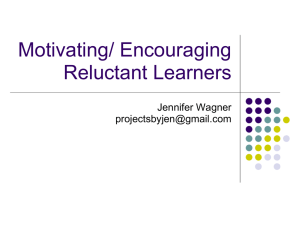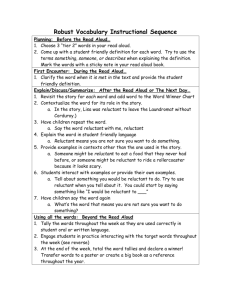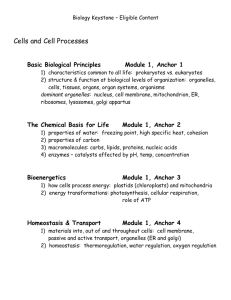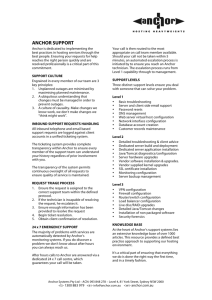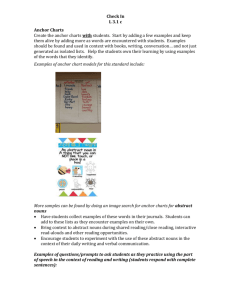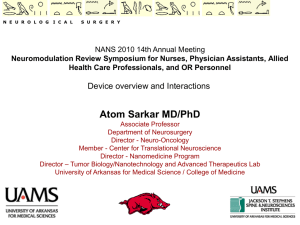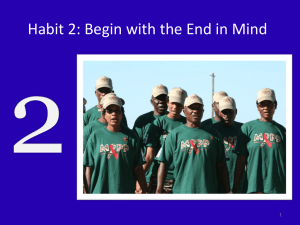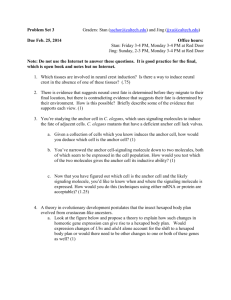Anchoring Vocabulary Instruction
advertisement
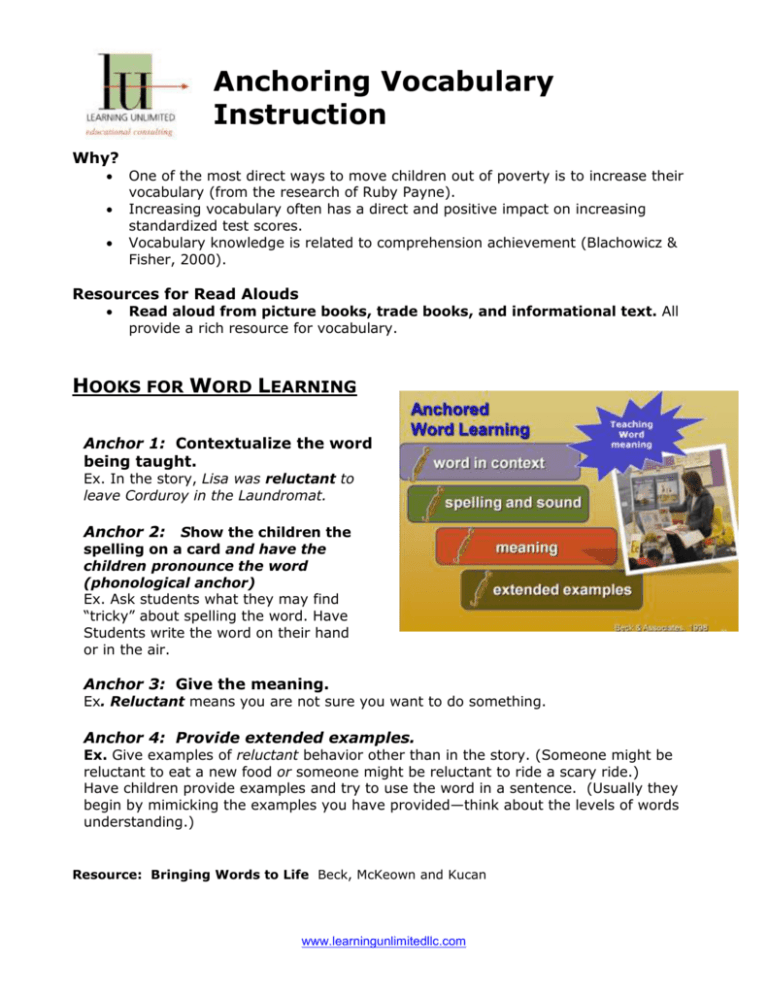
Anchoring Vocabulary Instruction Why? One of the most direct ways to move children out of poverty is to increase their vocabulary (from the research of Ruby Payne). Increasing vocabulary often has a direct and positive impact on increasing standardized test scores. Vocabulary knowledge is related to comprehension achievement (Blachowicz & Fisher, 2000). Resources for Read Alouds Read aloud from picture books, trade books, and informational text. All provide a rich resource for vocabulary. HOOKS FOR WORD LEARNING Anchor 1: Contextualize the word being taught. Ex. In the story, Lisa was reluctant to leave Corduroy in the Laundromat. Anchor 2: Show the children the spelling on a card and have the children pronounce the word (phonological anchor) Ex. Ask students what they may find “tricky” about spelling the word. Have Students write the word on their hand or in the air. Anchor 3: Give the meaning. Ex. Reluctant means you are not sure you want to do something. Anchor 4: Provide extended examples. Ex. Give examples of reluctant behavior other than in the story. (Someone might be reluctant to eat a new food or someone might be reluctant to ride a scary ride.) Have children provide examples and try to use the word in a sentence. (Usually they begin by mimicking the examples you have provided—think about the levels of words understanding.) Resource: Bringing Words to Life Beck, McKeown and Kucan www.learningunlimitedllc.com
